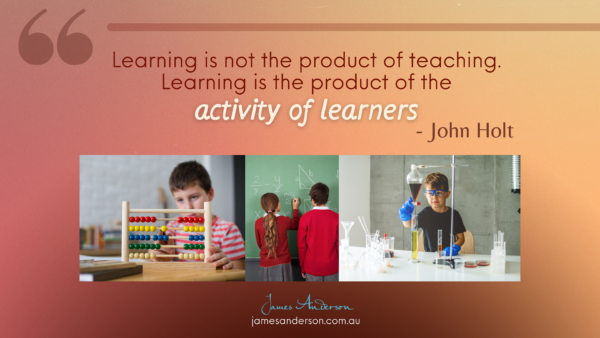Over the past decade, schools around the world have made enormous strides in improving teaching. Evidence-based strategies like Explicit Instruction have brought greater clarity to the classroom. Lessons are more purposeful. Expectations are more explicit. Students know what success looks like—and, more often than not, they’re achieving it.
But despite these improvements, something’s not quite right.
You probably feel it too.
Even as teaching becomes more effective, students don’t seem to be becoming better learners.
They’re completing the curriculum. They’re meeting the standard. In many cases, they’re achieving what we call “one year’s growth in one year’s time.”
But what exactly is growing?
Because when you look closely, you start to see the same pattern: students return to the classroom tomorrow needing the same level of support they needed today. They still rely on the scaffold. Still wait for the model. Still need prompting before they’ll act on feedback. And still avoid anything that feels too difficult.
They’re doing the work. But they’re not becoming more capable of doing it on their own.
That’s not growth of the learner. That’s coverage of the learning.
We Don’t Have a Teaching Problem. We Have a Learning Problem.
For years, we’ve told ourselves that better teaching leads to better learning—and in many ways, that’s true. Teaching matters enormously. But learning doesn’t happen because something is taught. It happens because the learner actively engages in the process.
As John Holt reminded us more than 50 years ago:

So the real question is no longer: Are we teaching well?
It’s: Are students becoming better at learning?
That’s a much harder question to answer. But it’s also the one that matters most.
Because if students are only successful when the conditions are perfect—when the teacher is present, the task is clear, and the next step is modelled—they haven’t grown as learners. They’ve grown as performers.
This is what we’re seeing in many classrooms: students who can reproduce what they’ve been shown, but struggle when asked to adapt, transfer, or extend it. As Robert Bjork and colleagues have consistently shown, the strategies that improve performance in the short term often don’t support long-term retention or transfer. In fact, easy success during practice can create illusions of learning—students feel fluent, but their understanding is fragile (Bjork & Bjork, 2011).
This is the Learning Equation. And it reframes the conversation.
Most schools have spent years improving the first half of the equation. We’ve invested heavily in the skill of teaching. But we’ve spent far less time thinking about the second half—what skilful learning looks like, and how to develop it.
Cognitive scientist Daniel Willingham puts it bluntly:
Memory is the residue of thought. (Willingham, 2009)
If students aren’t being asked to think deeply—if they’re only reproducing steps shown to them—they may not be forming the robust mental models needed for real understanding.
That’s why we see learners who perform well in structured tasks, but who stall when the scaffolds are removed. Their success depends entirely on the teacher’s presence—not on their own capacity to stretch, adapt, or act on feedback.
And that’s the core issue: they’re not becoming more skilful as learners.
Learnership Doesn’t Replace Explicit Instruction. It Completes It.
This is not a criticism of Explicit Instruction. It’s a recognition of what it was designed to do—and what it wasn’t.
Explicit Instruction delivers content with clarity. It reduces ambiguity. It supports success in the Performance Zone. And for many students, it’s exactly the structure they need.
But structure alone doesn’t create growth.
Not the kind of growth we’re talking about.
Not growth of the learner—the kind that makes students more agentic, more adaptive, more capable of tackling future challenges without being led step by step through them.
That’s where Learnership comes in. It builds the skill of learning itself—developing students who know how to engage with challenge, act on feedback, and grow over time.
John Hattie made a key observation in Visible Learning for Teachers—one that’s often overlooked:
When students invoke learning strategies rather than performance strategies… these dispositions can be taught; they can be learned. (Hattie, 2012)
But we haven’t consistently taught those dispositions. And students haven’t consistently learned them.
That’s the missing piece.
Want to Explore This Further?
If this is resonating, I’ve written a white paper that goes deeper.
Explicit Instruction Delivers Learning. Learnership Develops Learners.
It’s a practical, research-informed guide for school leaders who want more than compliance and coverage. It lays out a path toward learners who are capable, independent, and ready for what comes next.



